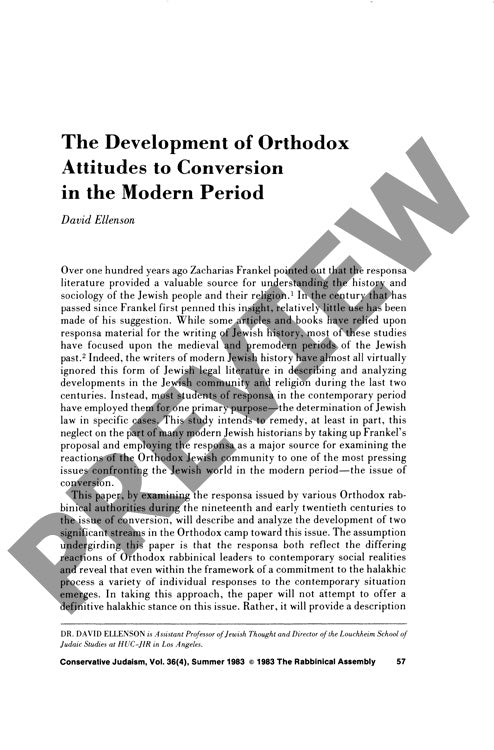The Development of Orthodox Attitudes To
Couldn't load pickup availability
Orthodox rabbis' responses to intermarriage and conversion underwent a dramatic shift between 1840-1900, revealing the halakhic system's capacity to adapt to social upheaval. Through analysis of rabbinic responsa literature from the nineteenth and early twentieth centuries, using Zacharias Frankel's methodological framework, two distinct patterns emerge in Orthodox conversion policy. The initial period (1840-1870) saw authorities like Bernays, Chajes, and Ettlinger adopt stringent positions, rejecting marriage-motivated converts and non-Orthodox conversions as Jewish intermarriage rates rose and Reform Judaism gained influence. However, by the late 1800s, a more accommodating approach developed under rabbis Hoffmann, Horovitz, and Kalischer, who reinterpreted halakhic precedents to facilitate conversion of gentile spouses and children of mixed marriages. This transformation in rabbinic thought aimed to prevent Jewish defection while preserving communal boundaries. Both approaches represented legitimate halakhic responses to modern social realities, demonstrating the pluralistic nature of Jewish law. These findings, drawn from previously underutilized responsa literature, fill a significant gap in modern Jewish historiography while illuminating the interplay between religious authority and communal sociology.

More Information
-
Physical Description
-
Publication Information
Published 1983
ISBN
-
Publication Credits
David Ellenson

